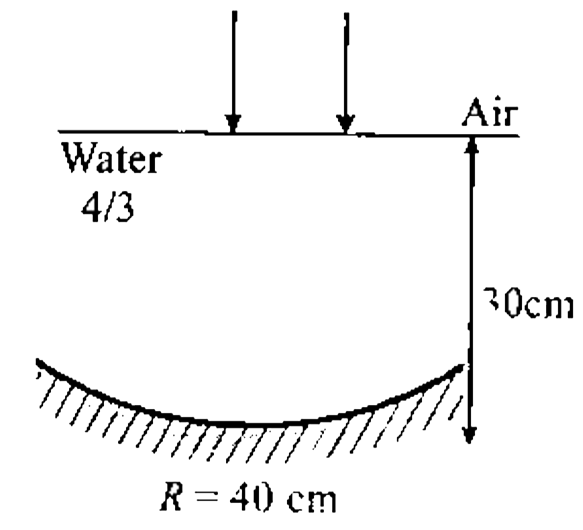Statement-1: Paraxial rays are always parallel to the axis of a mirror or lens.
Statement-2: A parallel beam close to principal axis converges at the focal point.
Statement-1 is true, statement-2 is true and statement-2 is correct explanation for statement-1.
Statement-1 is true, statement-2 is true and statement-2 is NOT the correct explanation for statement-1.
Statement-1 is true, statement-2 is false.
Statement -1 is false, statement -2 is true.
The correct Answer is:D
Paraxial Ray's makes small angle
Topper's Solved these Questions
- MASTER PRACTICE PROBLEMBook:BANSALChapter:MASTER PRACTICE PROBLEMExercise:Multiple objective
Explore 131 Videos
- MASTER PRACTICE PROBLEMBook:BANSALChapter:MASTER PRACTICE PROBLEMExercise:Subjective
Explore 107 Videos
- MASTER PRACTICE PROBLEMBook:BANSALChapter:MASTER PRACTICE PROBLEMExercise:Comphrehension
Explore 134 Videos
- FLUID MECHANICSBook:BANSALChapter:FLUID MECHANICSExercise:PYQS AIEEE
Explore 10 Videos
- SEMICONDUCTORSBook:BANSALChapter:SEMICONDUCTORSExercise:CBSE Question
Explore 32 Videos
Similar Questions
Knowledge Check
Assertion:- Paraxial rays are always parallel to the principal axis.
Reason:- A parallel beam parallel to principal axis converges at the focal point.AIf both Assertion & Reason are True & the Reason is a correct explanation of the Assertion.BIf both Assertion & Reason are True but Reason is not a correct explanation of the Assertion.CIf Assertion is True but the Reason is False.DIf both Assertion & Reason are False.Statement-1: Position of image approaches focus of a lens, only when object approaches infinity,
Statement-2: Paraxial rays incident parallel to principal axis intersect at the focus after refraction from lens.AStatement-1 is true, statement-2 is true and statement-2 is correct explanation for statement-1.BStatement-1 is true, statement-2 is true and statement-2 is NOT the correct explanation for statement-1.CStatement-1 is true, statement-2 is false.DStatement -1 is false, statement -2 is true.A ray of light is incident on a concave mirror. If it is parallel to the principal axis, the reflected ray will
Apass through the focusBpass through the centre of curvatureCpass through the poleDretrace its path
We know that parallel light rays which are inclined to the principal axis of a spherical mirror, after reflection converge at a point in the focal plane of the mirror. With this knowledge explain how you will trace the reflected ray for incident ray PQ shown in the Fig. F is focus and C is centre of curvature of the mirror.

View SolutionA concave mirror is placed inside water its shining surface upwards and principal axis vertical as shown in figure. Rays are incient parallel to the principal axis of the concave mirror. Find the position of the final image.

View SolutionParallel rays of light entering a convex lens always converge at:
View SolutionWhen a ray of light travelling parallel to the principal axis of a concave mirror strikes at the polished surface of mirror, the reflected ray
View SolutionA ray of light coming parallel to the principal axis after passing through a convex lens, passes through its
View Solution

